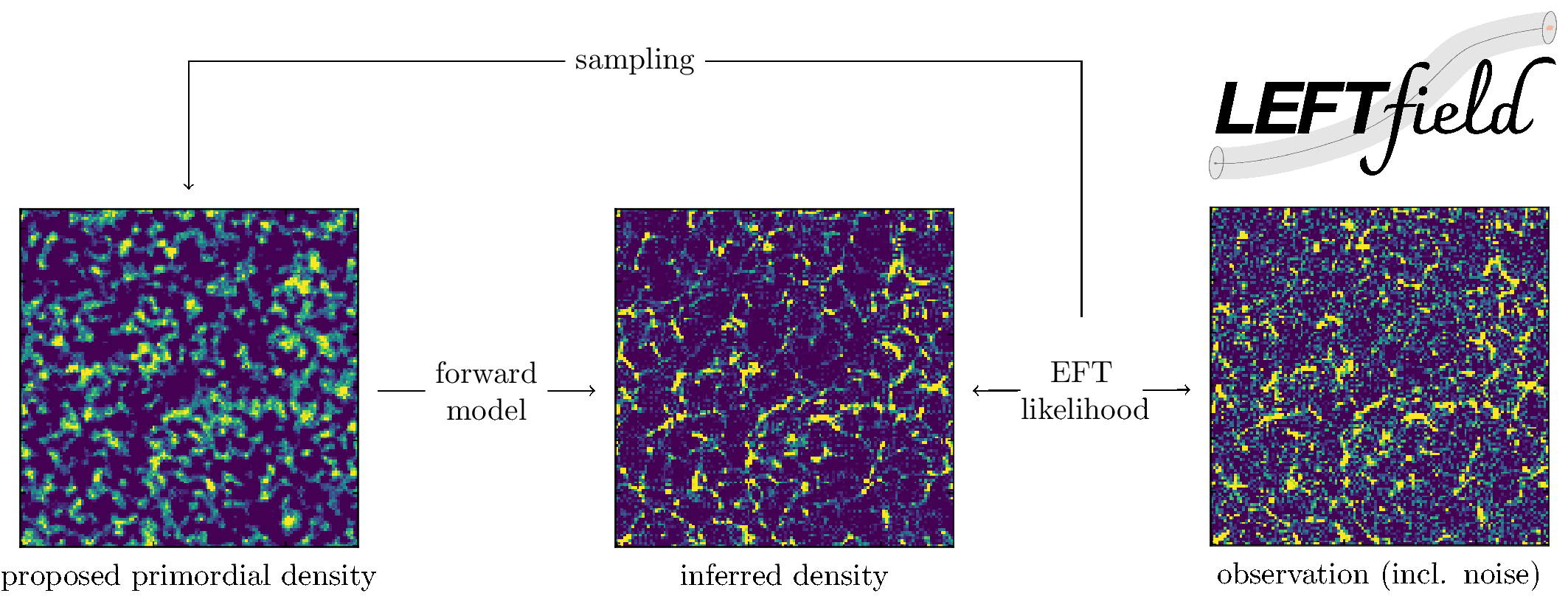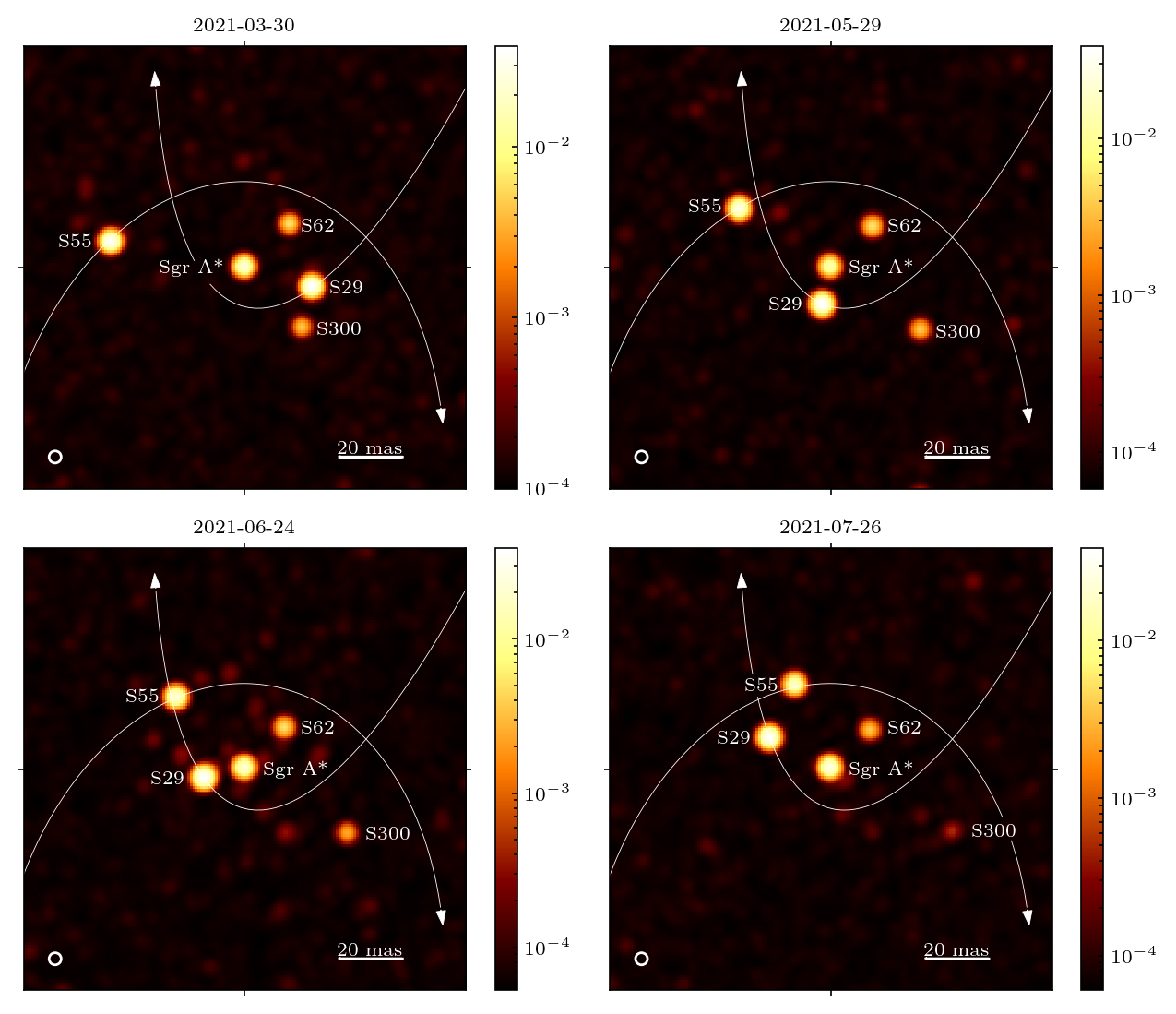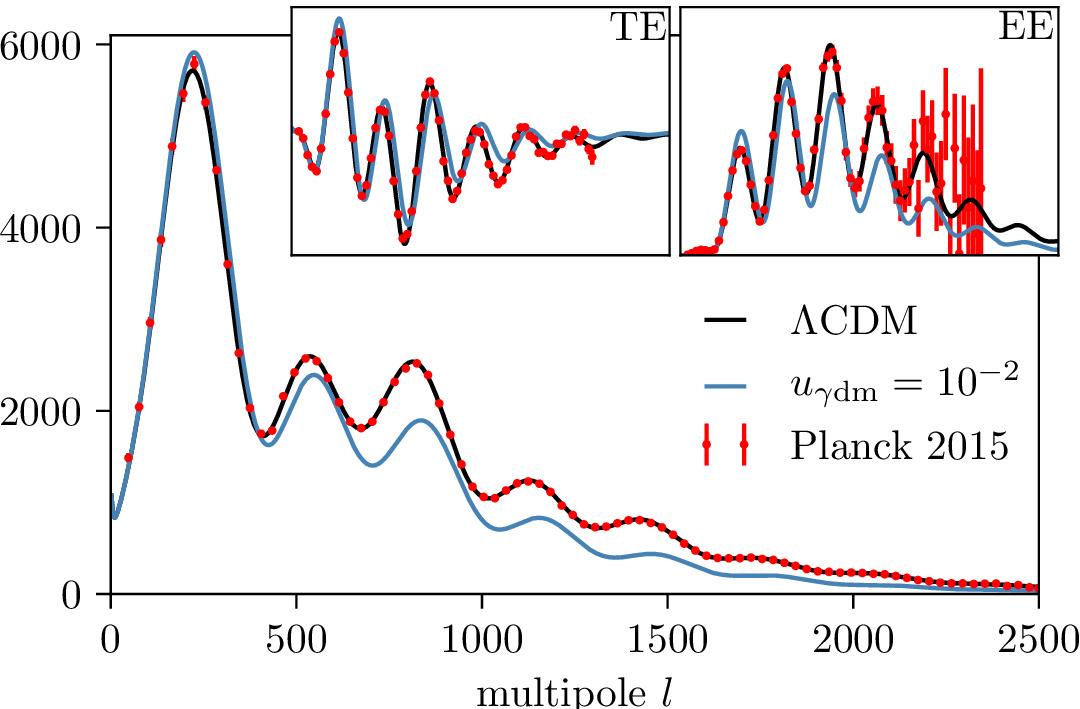Large Scale Structure at the Field Level

The distribution of galaxies across space and time holds a lot of information about the early universe and how it evolved. Over the comming years, new surveys, such as DESI and Euclid, will provide data at unprecedented quality. The analysis of this data is challenging and requires robust theory predictions as well as sophisticated statistical modeling. I am part of the effort to develope a new analysis method, that reconstructs the entire cosmological evolution in the survey volume. In this way, we can maximize the ammount of information extracted from the data. At the same time, the analysis is robust to uncertainties in the theory predictions, thanks to the theoretical framework that we use, the Effective Field Theory of Large Scale Structure.
There is also a detailed outreach article available.
Deep Interferometric Imaging: the Galactic Center with GRAVITY
 The Galactic Center harbors the closest supermassive black hole to earth, called Sagittarius A*. With the GRAVITY interferometer we can trace very precisely how individual stars revolve around the black hole and so test the predictions of General Relativity (such as the gravitational redshift and Schwarzschild precession). GRAVITY achieves its incredible high resolution by combining the light of four big telescopes. But are there any faint stars close to the black hole which have evaded detection so far? To adress this question, we developed a new algorithm that translates the GRAVITY data into high-resolution images which are very sensitive to faint details. This requires to model a lot of complicated physical processes in the Galactic Center, like brightness variations of Sgr A*, as well as instrumental effects. We achieved that by using a state-of-the-art Bayesian machine learning framework called Information Field Theory. And it worked! In 2021 we discovered a new star called S300.
The Galactic Center harbors the closest supermassive black hole to earth, called Sagittarius A*. With the GRAVITY interferometer we can trace very precisely how individual stars revolve around the black hole and so test the predictions of General Relativity (such as the gravitational redshift and Schwarzschild precession). GRAVITY achieves its incredible high resolution by combining the light of four big telescopes. But are there any faint stars close to the black hole which have evaded detection so far? To adress this question, we developed a new algorithm that translates the GRAVITY data into high-resolution images which are very sensitive to faint details. This requires to model a lot of complicated physical processes in the Galactic Center, like brightness variations of Sgr A*, as well as instrumental effects. We achieved that by using a state-of-the-art Bayesian machine learning framework called Information Field Theory. And it worked! In 2021 we discovered a new star called S300.
Dark Matter microphysics constrained by the CMB
 The Cosmic Microwave Background (CMB) emerged in the very early universe but can still be measured today. It holds tiny but detectable temperature variations, that tell a lot about the physical conditions at such early times. According to our standard model of cosmology, the universe expands and cooles down. So the CMB also offers a window into times when the universe was much hotter and denser. And so far, all observations agree very well with the predictions of this standard model. But the model also holds some mysteries, one of them the postulated existance of a new form of matter which only interacts through gravitation and is called Dark Matter. We explored how the CMB radiation would change if this was not eniterly true; if Dark Matter had some very feeble interactions with other particles such as photons and neutrinos. Then, by comparing our calculations to the measurements of the Planck satellite, we could constrain the maximum strength of such interactions and indirectly learn more about the properties of Dark Matter.
The Cosmic Microwave Background (CMB) emerged in the very early universe but can still be measured today. It holds tiny but detectable temperature variations, that tell a lot about the physical conditions at such early times. According to our standard model of cosmology, the universe expands and cooles down. So the CMB also offers a window into times when the universe was much hotter and denser. And so far, all observations agree very well with the predictions of this standard model. But the model also holds some mysteries, one of them the postulated existance of a new form of matter which only interacts through gravitation and is called Dark Matter. We explored how the CMB radiation would change if this was not eniterly true; if Dark Matter had some very feeble interactions with other particles such as photons and neutrinos. Then, by comparing our calculations to the measurements of the Planck satellite, we could constrain the maximum strength of such interactions and indirectly learn more about the properties of Dark Matter.




